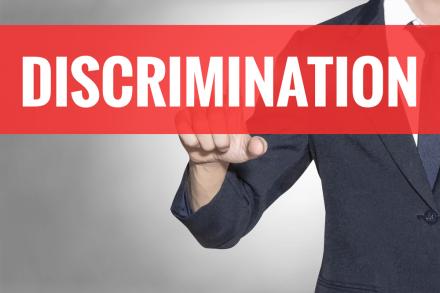
These days, business owners who fail to deal with the issue of discrimination and sexual harassment are running big risks. Just take a look at the numbers: Since Anita Hill testified against Clarence Thomas in 1991, sexual harassment complaints to the Equal Employment Opportunity Commission (EEOC) have more than doubled. Even though many of these complaints are frivolous, companies must have a plan in place to reduce the number of discrimination and harassment lawsuits. They must also have a plan to win these cases when they do pop up.
Should You Worry?
The short answer is, yes. EEOC statutes only cover companies with 16 or more employees, but even in a small company, you're not off the hook. State laws, which are in most cases similar to EEOC statutes, still apply.
If you're a big company, you probably already have an HR manager or in-house lawyer available to navigate EEOC's thicket of rules and regulations. The key to EEOC compliance is creating a paper trail. Document, document, document. Keep copies of resumes and notes on why one person was hired over another. Keep careful documentation when disciplining or firing an employee.
- See Letting Them Go: Terminating Employees Carries a Set of Legal Implications for more information.
Review Your Reviews
Employers make their most common mistake during the employee review process, when many managers unintentionally help create paper trails for a discrimination suit.
Consider this example: A worker is fired after a single poor performance review, even though that employee has a history of positive or satisfactory reviews. No one likes to be the bearer of bad news. So managers give workers passing or even good performance reviews to avoid hard feelings on both sides of the table. John [an employee] gets good reviews even though his work is not up to par, and this kind of thing can go on and on, year after year, until one day the employer can't take it anymore and fires John for poor job performance. Then John turns right around and sues, saying, 'you gave me good performance review after good performance review and then fired me for poor performance.'
If that employee is handicapped, female, or part of a minority, and replaced by someone not covered by EEOC statutes, then the fired worker could really have a case. Bite the bullet, give an honest review every time, and make sure you document the review and any employee questions or complaints. "What you are doing is building a file that says an employee has a problem, and that file can be used to back up any discipline or demotion or dismissal.
Zero Tolerance
Experts say companies must offer three things to avoid EEOC sexual harassment entanglements:
- Employee training.
- A policy clearly stating that sexual harassment won't be tolerated.
- Assurance that complaints will be taken seriously.
The employer can't tell the employee, 'Don't worry about it, the harasser is just a bad guy.' You have to do an investigation—and you have to act on your findings. You have to be able to show you acted reasonably when you investigate a complaint. It is also important to tell the complaining worker about the result of the investigation, even if it does not end in discipline or dismissal. Anti-harassment and anti-discrimination policies must also be live. It can't be something that an employer establishes, and then puts away to get dusty.
- See Top Workplace Policies That You Need to Have to Protect Yourself from Liability for more information.
Hire Me or Else!
Job seekers who are interviewed but not hired seldom bring discrimination lawsuits, but it does happen. And there too, the key to a defense is documentation. The most important element is a concrete list of job qualifications. Candidates who do not meet them have less leeway to bring a suit, but if they do, companies (which have one) can rely on their anti-discrimination record to show a history of good faith in following EEOC guidelines.
Government Help
The common sense solution to avoiding discrimination and harassment suits: don't break the law. Don't treat someone differently because of gender, race, nationality, religion or disability. Sounds simple, but EEOC statutes are a world unto themselves, and sometimes your best guide can be the EEOC itself. A good starting point for employers is the EEOC website which has information on every make and model (and there are plenty) of discrimination and harassment types.
Local EEOC offices also offer Training Assistance Programs that walk managers through the agency's legal canyons. They offer resources on how to guard against particular forms of harassment and discrimination.
If it sounds like it costs a lot of time and money to stay in compliance with the EEOC, it does. But that's better than losing the time and money it takes to defend yourself if (and when) you are sued.


